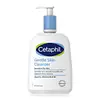What's inside
What's inside
 Key Ingredients
Key Ingredients

 Benefits
Benefits

 Concerns
Concerns

 Ingredients Side-by-side
Ingredients Side-by-side

Water
Skin ConditioningSolum Diatomeae
AbrasiveSodium Cocoyl Apple Amino Acids
Skin ConditioningGlycerin
HumectantAcrylates/Steareth-20 Methacrylate Copolymer
Acrylates Copolymer
Decyl Glucoside
CleansingDisodium Cocoamphodiacetate
CleansingPhenoxyethanol
PreservativeLauryl Glucoside
CleansingLithium Magnesium Sodium Silicate
AbsorbentPolysorbate 20
EmulsifyingHexylene Glycol
EmulsifyingSodium Hydroxide
BufferingCitrus Aurantium Dulcis Peel Extract
Emulsion StabilisingLimonene
PerfumingDecylene Glycol
Skin ConditioningEthylhexylglycerin
Skin ConditioningPanthenol
Skin ConditioningTetrasodium EDTA
1,2-Hexanediol
Skin ConditioningAscorbyl Glucoside
AntioxidantBorago Officinalis Seed Oil
EmollientTocopherol
AntioxidantHelianthus Annuus Seed Oil
EmollientTocotrienols
Skin ConditioningTriolein
Skin ConditioningTrilinolein
Skin ConditioningMagnesium Nitrate
Methylisothiazolinone
PreservativeMethylchloroisothiazolinone
PreservativeMagnesium Chloride
Water, Solum Diatomeae, Sodium Cocoyl Apple Amino Acids, Glycerin, Acrylates/Steareth-20 Methacrylate Copolymer, Acrylates Copolymer, Decyl Glucoside, Disodium Cocoamphodiacetate, Phenoxyethanol, Lauryl Glucoside, Lithium Magnesium Sodium Silicate, Polysorbate 20, Hexylene Glycol, Sodium Hydroxide, Citrus Aurantium Dulcis Peel Extract, Limonene, Decylene Glycol, Ethylhexylglycerin, Panthenol, Tetrasodium EDTA, 1,2-Hexanediol, Ascorbyl Glucoside, Borago Officinalis Seed Oil, Tocopherol, Helianthus Annuus Seed Oil, Tocotrienols, Triolein, Trilinolein, Magnesium Nitrate, Methylisothiazolinone, Methylchloroisothiazolinone, Magnesium Chloride
 Reviews
Reviews

Ingredients Explained
These ingredients are found in both products.
Ingredients higher up in an ingredient list are typically present in a larger amount.
Glycerin is already naturally found in your skin. It helps moisturize and protect your skin.
A study from 2016 found glycerin to be more effective as a humectant than AHAs and hyaluronic acid.
As a humectant, it helps the skin stay hydrated by pulling moisture to your skin. The low molecular weight of glycerin allows it to pull moisture into the deeper layers of your skin.
Hydrated skin improves your skin barrier; Your skin barrier helps protect against irritants and bacteria.
Glycerin has also been found to have antimicrobial and antiviral properties. Due to these properties, glycerin is often used in wound and burn treatments.
In cosmetics, glycerin is usually derived from plants such as soybean or palm. However, it can also be sourced from animals, such as tallow or animal fat.
This ingredient is organic, colorless, odorless, and non-toxic.
Glycerin is the name for this ingredient in American English. British English uses Glycerol/Glycerine.
Learn more about GlycerinPanthenol is a common ingredient that helps hydrate and soothe the skin. It is found naturally in our skin and hair.
There are two forms of panthenol: D and L.
D-panthenol is also known as dexpanthenol. Most cosmetics use dexpanthenol or a mixture of D and L-panthenol.
Panthenol is famous due to its ability to go deeper into the skin's layers. Using this ingredient has numerous pros (and no cons):
Like hyaluronic acid, panthenol is a humectant. Humectants are able to bind and hold large amounts of water to keep skin hydrated.
This ingredient works well for wound healing. It works by increasing tissue in the wound and helps close open wounds.
Once oxidized, panthenol converts to pantothenic acid. Panthothenic acid is found in all living cells.
This ingredient is also referred to as pro-vitamin B5.
Learn more about PanthenolWater. It's the most common cosmetic ingredient of all. You'll usually see it at the top of ingredient lists, meaning that it makes up the largest part of the product.
So why is it so popular? Water most often acts as a solvent - this means that it helps dissolve other ingredients into the formulation.
You'll also recognize water as that liquid we all need to stay alive. If you see this, drink a glass of water. Stay hydrated!
Learn more about Water